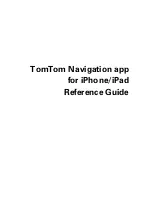
Programming i!-TimeManager
8
i!-TimeManager
i!-TimeManagerEngineMod Module Definitions (Cont.)
strTmTzDesc
A string containing the time zone description.
For the Eastern time zone:
• "EST" for Standard time
• "EDT" for Daylight Saving time
For the Central time zone:
• "CST" for Standard time
• "CDT" for Daylight Saving time
For the Mountain time zone:
• "MST" for Standard time
• "MDT" for Daylight Saving time
For the Pacific time zone:
• "PST" for Standard time
• "PDT" for Daylight Saving time
This string is dynamic, since the module determines Daylight Saving time. The "%s"
allows the module to replace a portion of the string with a string listed in the DST rules.
So to handle the case you specify:
• "E%sT" Eastern time zone
• "C%sT" Central time zone
• "M%sT" Mountain time zone
• "P%sT" Pacific time zone
For description in DTS time rules, you use:
• Standard Description: S
• Daylight Saving Description: D
Then the module will create "EST" or "EDT" (for the Eastern time zone) depending on
whether DTS is in effect or not. The "%s" is a placeholder for a string specified in the
DTS rules section.
dTmTzGmtOffset
A floating point number containing the GTM offset in hours. The common US offsets
are:
• Eastern = -5
• Center = -6
• Mountain = -7
• Pacific = -8
Locations such as Newfoundland, which runs 3 hours 30 minutes behind GMT would
use a GMT offset of -3.5. This information is used for calculating sunrise and sunset
times and for calculating local time when communicating with a Internet time server.
strTmTzDstRules
A string containing 1 or more daylight saving rule strings. Multiple daylight saving rules
are separated with the "$FF" character. Two stardard rule strings, ‘None’ and ‘US’ will
disable daylight savings time (default) and enable US daylight savings rules respec-
tively. For other locations, daylight saving rule strings should be in the following format:
Custom string: "Month" "DayDescription" "Time" "Offset From Std" "Description"
"Month": Month name ex: "Apr"
"Time" Time to activate (hh:mm:ss, 24 hour). ex: "02:00:00"
"Offset From Std" Time to offset from GMT (hh:mm:ss, 24 hour). ex: "01:00:00"
"Description" String to replace "%s" with in Timezone description. ex: 'D'
"DayDescription" Day Description. Fixed Date, Last Day Of Week or
First Day of Week Before/After Date
Fixed ex: "15"
Last Day of Week ex: "LastSunday"
First Day of Week Beforer DATE-ex: "Sun<=24"
First Day of Week After DATE-ex: "Sun>=1"
See
i!-TimeManagerEngineModTest.axs
for more examples.
strTmLocName
A string describing the location the system is installed in. This could be any string
describing the region or city.
Continued


































